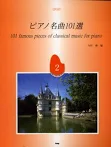Satie, Erik : 3 Gnossiennes
Work Overview
Publication Year:1913
First Publisher:Rouart-Lerolle
Instrumentation:Piano Solo
Genre:pieces
Total Playing Time:8 min 30 sec
Copyright:Public Domain
Commentary (1)
Author : Ishikawa, Nobuyuki
Last Updated: June 1, 2007
[Open]
Author : Ishikawa, Nobuyuki
Erik Satie composed six pieces titled "Gnossiennes" (all for piano) throughout his life. Among them, the three pieces, Nos. 1 to 3, composed in 1890 (when Satie was 24 years old), are collectively grouped and referred to as "Trois Gnossiennes".
In the early 1880s, Satie was a student at the Paris Conservatoire, but he disliked the institution, unable to adapt to the conservative atmosphere of the music world at the time (he seemed to be an exceptionally lazy and habitual absentee), and was expelled in 1882 due to poor academic performance. Although he was later accepted into Todou's harmony class and Mathias's piano class, he was never an outstanding student. However, around that time, Satie began to compose a series of representative early works (which would later profoundly influence Debussy, Ravel and others). In 1887, he composed "Trois Sarabandes", in 1888, "Trois Gymnopédies", and in 1890, "Trois Gnossiennes".
At the Exposition Universelle held in Paris in 1889, Satie was deeply impressed by Eastern culture, particularly Javanese dance. Inspired by this, he composed "Trois Gnossiennes" the following year. Consequently, one can perceive a more oriental atmosphere in them compared to "Trois Gymnopédies". The title is said to be Satie's own coinage, but it likely carries the strong implication of "in the manner of Gnossos." "Gnossos" is said to refer either to "Knossos" (an ancient city) on the island of Crete, or to the Gnostic mystical sect.
Characteristics of Each Piece
- Gnossienne No. 1: Greek modes and appoggiaturas
- Gnossienne No. 2: Frequent use of triplets in the melody (hence, it feels like 12/8 time)
- Gnossienne No. 3: Greek modes and repeated melodic phrases, frequent use of augmented seconds
Although all three pieces lack bar lines, this does not mean the meter is indefinite; rather, there is a stable meter that does not require bar lines. A regular 4/4 rhythm is consistently repeated in the left hand. Furthermore, French comments such as "Sur la langue" (On the tongue), "Ne sortez pas" (Don't go out), and "Ouvrez la tête" (Open the head) are appended. As these are likely the composer's own performance indications, it would be wise for performers not to take them literally but to regard them as a kind of hint.
Movements (3)
PTNA & Partner Channel Videos(4items)
Sheet MusicView More
Scores List (17)

KMP(ケイ・エム・ピー) ケイエムピー

KMP(ケイ・エム・ピー) ケイエムピー

(株)リットーミュージック

(株)ドレミ楽譜出版社

ハンナ(ショパン)

(株)シンコーミュージックエンタテイメント

ハンナ(ショパン)

ハンナ(ショパン)

(株)シンコーミュージックエンタテイメント

(株)サーベル社

(株)全音楽譜出版社

(株)シンコーミュージックエンタテイメント

(株)ドレミ楽譜出版社

Musikverlag Doblinger

Neil A. Kjos Music Company

Peters

Peters




